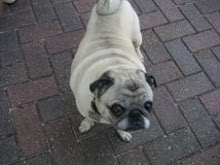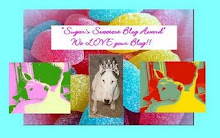 There was a mobil collection event to drop off household chemical waste at our local train station yesterday. This event was held by SWALCO (the Solid Waste Agency of Lake County) and dad took a box full of stuff there. Dad said it was very cool how he just pulled in, opened the hatch of his car, and the guys in hazmet suits took the box out. This is so easy that there is no excuse not to dispose of toxic waste this way instead of throwing them in the regular garbage.
There was a mobil collection event to drop off household chemical waste at our local train station yesterday. This event was held by SWALCO (the Solid Waste Agency of Lake County) and dad took a box full of stuff there. Dad said it was very cool how he just pulled in, opened the hatch of his car, and the guys in hazmet suits took the box out. This is so easy that there is no excuse not to dispose of toxic waste this way instead of throwing them in the regular garbage.  Household Chemical Waste (HCW) and household hazardous waste are terms used to describe the fairly common chemical products accumulated in a household from a variety of cleaning, painting, pest control and yard work activities. These types of products are a small but potentially problematic portion of the municipal solid waste stream. National studies estimate that HCW comprises less than 1% of the municipal solid waste stream. In Lake County, this equates to an estimated 2,500 tons disposed of in our landfills annually. That's a lot of toxic waste! Toxic waste that is disposed of improperly, i.e. "thrown in the garbage", ends up in landfills where it leaches into the air, soil, and water. This is bad for everyone, not just humans. This is also bad for you even if you don't live near a landfill because the food you eat may have come from somewhere near a landfill.
Household Chemical Waste (HCW) and household hazardous waste are terms used to describe the fairly common chemical products accumulated in a household from a variety of cleaning, painting, pest control and yard work activities. These types of products are a small but potentially problematic portion of the municipal solid waste stream. National studies estimate that HCW comprises less than 1% of the municipal solid waste stream. In Lake County, this equates to an estimated 2,500 tons disposed of in our landfills annually. That's a lot of toxic waste! Toxic waste that is disposed of improperly, i.e. "thrown in the garbage", ends up in landfills where it leaches into the air, soil, and water. This is bad for everyone, not just humans. This is also bad for you even if you don't live near a landfill because the food you eat may have come from somewhere near a landfill.So what is a household chemical waste? First, look for the words "corrosive," "flammable," "explosive or reactive," and/or "toxic" somewhere on the product's packaging. These are the four major classifications of hazardous materials and they are detailed below:
Corrosive materials can dissolve or wear away materials and most can harm the skin and eyes. Flammable materials pose a serious threat of fire if stored improperly. Many of these items indicate, “Do not store near heat” or “Keep in cool, dry place.”
Explosive or reactive materials can explode when combined with other substances. They may also react violently in other ways, such as producing toxic gases. For example, when bleach and many dish detergents that contain chlorine bleach mix with ammonia, lye, or acids, the combination can produce toxic gases.
Toxic materials are those that, in sufficient quantities, pose a hazard to human health. They are sometimes identified with the symbol of a skull and crossbones. Most cupboards and closets are full of potentially toxic materials, from air fresheners and carpet deodorizers to mothballs and oven cleaners.
So what can you drop off at the collection site? Not everything that is toxic can be dropped off, since there are some items that require even more specialized collection.
Materials accepted at HCW collections:
Oil-based Paint
Solvents
Unwanted Prescriptions, Medicines & Supplements
Motor Oil
Household Cleaners
Household Batteries (alkaline and rechargeable)
Antifreeze
Garden / Lawn Chemicals
Pool Chemicals
Asbestos
Fluorescent Light Bulbs/CFLs
Old Gasoline
Fungicides
Insecticides
Pesticides
Metal Polishes
Paint Remover
Driveway Sealer
Drain Cleaner
Aerosol Products
Hobby Chemicals
Mercury (including thermometers and thermostats)
Materials not accepted at HCW collections:
Business / Institutional Wastes
Explosives / Ammunition
Fire Extinguishers
Lead-acid Batteries
Tires
Latex Paint
Agricultural Chemicals
Fireworks
Propane Tanks
Smoke Detectors
Medical Wastes
Household Electronics
Now that you know what you have to do to dispose of toxic chemicals, do it! If you live in Lake County, there are year-round collection events at SWALCO's permanent facility in Gurnee. There are also mobil events held at various locations throughout the county from April through November, like the one my dad went to. Either way, do the right thing - dispose of toxic waste responsibly. Mother Earth thanks you in advance for your cooperation.









No comments:
Post a Comment